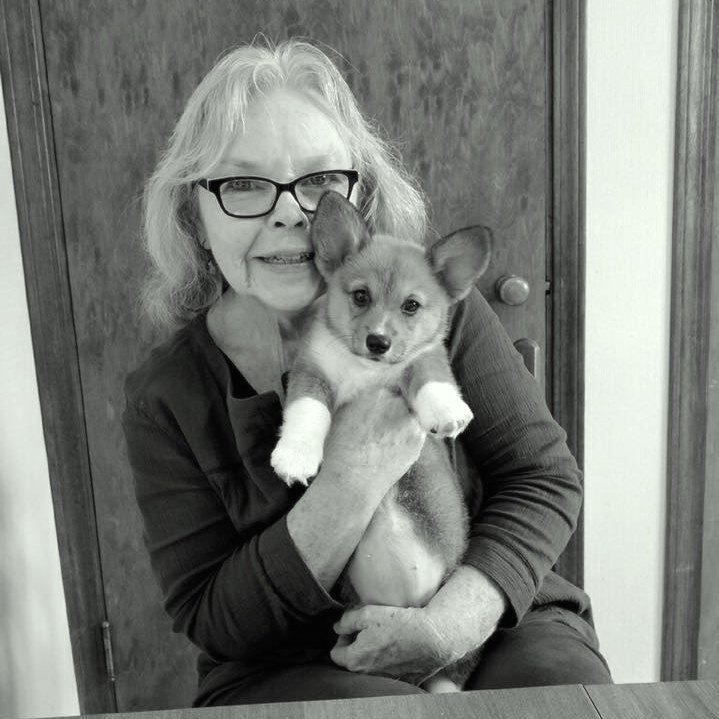Creative Nonfiction by Marianne Worthington
I.
Just about this same time last year, while driving north in on Interstate 75, I saw that the highway crew had mowed down all the flowering redbud trees to widen the interstate. The sight of all that shocking pink uprooted from the earth and being piled up for burning—for miles—felt cruel and corrupt.
In Kentucky the Eastern Redbud seems to grow everywhere, but it’s especially prevalent in its unchecked little forests along the roadways. They bunch together in tight clumps like schoolgirls at recess. Were the bulldozer drivers affected by the destruction of all that color? There’s so many redbud trees here. What’s a few dozen to sacrifice for human commerce and ease of travel?
The branches broken, the root balls exposed, the magenta blossoms—that blazing, indescribable pink—already drooping and losing their bright luster, dying in the ditches amid the roar and stink of heavy equipment seemed sinful.
II.
This spring, isolated with my partner and holed up inside against an invisible pathogen, I watch the young redbud in my neighbor’s yard. It has bloomed successfully for the three springs that the neighbor’s house has been neglected. Eventually, some of the siding blew off the back of the house. The swimming pool cover rotted and fell into the stagnant water. Weeds choked the fence, and starlings nested in the eaves. I see them fly in and out, in and out, imagining their straw nest inside the attic. The clumps of wild trees and bushes at the edge of the abandoned yard harbor so many birds that my mornings are filled with entertaining bird antics. The two deserted cars left in the yard give shelter to a family of rabbits. The neighbor’s house is in a steady decline, obstructed with vines racing through the gutters and ugly with dilapidation. But the redbud tree next to the house lifts its bare branches higher every winter and shouts the loudest as the weather warms and the fuchsia flowers begin to take hold and skyrocket into the blue sky.
III.
Every day I worry for my daughter and her husband. His work as an assistant manager at a busy grocery store in Tennessee makes him “essential.” He cannot stop working.
My daughter has a chronic illness treated with regular immune suppression therapy. She has stopped working and is staying at home, but each day is a crapshoot for them. Old people are not the only ones dying from this pandemic. The other day I saw an interview with the mother of a 27-year-old who had died after contracting the virus while working in a grocery store. I suddenly felt weak and had to sit down while watching the interview. My daughter is around that age. COVID-19 would likely make her deathly ill.
I worry so much that I’m not sleeping; I’m overeating; I’m procrastinating with my own work and watching too much really stupid television. I don’t know how to deal with the anxiety. When I call my friends or check social media, I see I’m not alone in my fears. Everyone is scared, feeling disenfranchised, experiencing nervousness in calamitous ways.
IV.
Most days I walk the dog past the neighbor’s redbud tree. She loves to walk up our little road, explore the ditches, sniff for the other critters who have traced the same paths. The neighbor’s cat sometimes hides in the low branches along a stand of woods as we pass. I can see her, but the dog usually does not. At the creek bank down the hill we see more young redbud trees peeking their pink through the woods. Sometimes we see the groundhog who lives behind us. We listen to the jays hollering their fierce songs and watch three mockingbirds chase after a crow who is flying ahead with something golden pinched in its beak. In the backyard, we watch the bluebirds gather on the roof then dive down to the yard to bathe in a puddle formed where the air conditioner drains. They bathe every day around 4 p.m. One by one, they take turns splashing. After their bath, they fly back onto my roof to shake and preen, then they fly off toward the redbud tree.
V.
Today we took the dog for a car ride. We dropped off the recycling, careful that no one else was near us when we got out of the car to drop off our plastic, aluminum, and paper waste. The day was sunny and mild, perfect weather in southeastern Kentucky.
We drove up Highway 25W into Goldbug and took the interstate back to Williamsburg where the freeway was a picturesque blur of pink. The redbuds are scrappy and hardy at once, teeming with a color found nowhere else in nature, almost blinding in their sudden spring blush.
Today I’m cheered by witnessing the redbuds’ theatrics in their short-lived flowering season. The redbud shows off its flowers, then displays its sweet, heart-shaped leaves, bears its pea-shaped fruit, and later sheds its cover to prepare anew for another spring.
What will next spring bring for us, I wonder, in this current deluge of horror, politicized illness, bungling federal response, and death?
The redbud knows its role. I wish I knew ours.


2 responses to “Redbud in the time of pandemic (Spring 2020)”
Enjoyed your story, Marianne!
This is a thoughtful and yet somehow comforting piece that evokes our own similar emotions in this time. I’m holding on to bluebirds.
Our daughter fought colorectal cancer and won, but the battle left her permanently wounded. She is constantly on guard against dehydration. No matter the age, we fear for our precious children.
The poet shines through in the powerful images of rot and birth. In my own anxiety, I take some comfort in this powerful articulation.